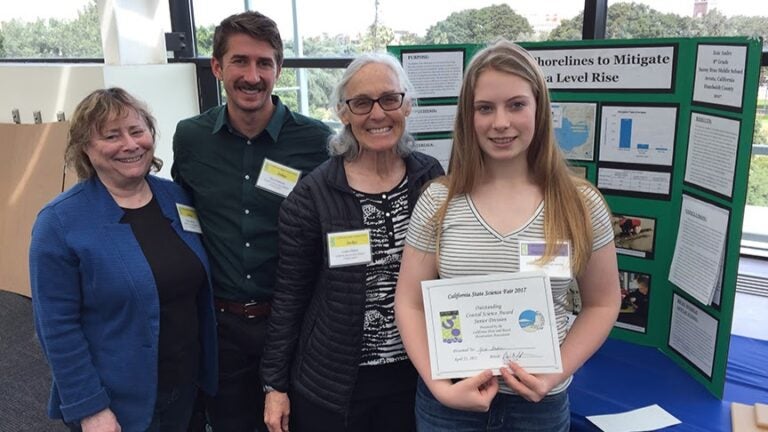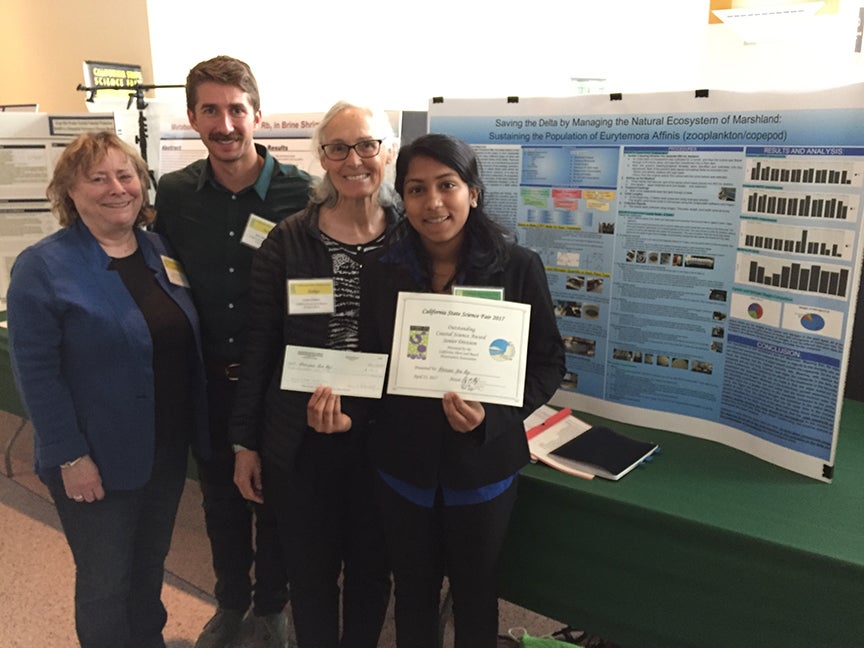
2017 California State Science Fair: Outstanding Coastal Science Awards
Walking into the California Science Center on a spring morning, it is awe inspiring to see student science fair projects fill the center, in practically every open space including beneath the space shuttle. Projects from diverse categories, from engineering to zoology, biology and environmental science show that science teaching and inquiry are alive and well in California schools.
USC Sea Grant was proud to judge and present awards to two outstanding students at this years California State Science Fair April 24-25 at the California Science Center. More than 800 students earned a place at the state fair after having won top honors for their projects in local, county, or regional science fairs. The atmosphere was filled with excitement, creativity, and pure enthusiasm as students celebrated their projects.
Phyllis Grifman, Associate Director, Linda Chilton, Education Programs Manager, and Nick Sadrpour, Science, Research and Policy Specialist at USC Sea Grant reviewed 50 projects related to ocean and coastal science. They presented awards for Outstanding Coastal Science to middle school student Zoie Andre, from Arcata, CA, and high school student Rhitishah Yuva Raju, from Folsom, CA. The students received $250 (middle school award) and $500 (high school award). California Shore and Beach Preservation Association has sponsored the awards and USC Sea Grant has helped judge the awards for more than a decade.
“The winning projects are great examples of the integration of science and engineering to solve coastal challenges now and into the future,” said Chilton.
Ms. Andre’s project tested and compared the effectiveness of natural material structures used to develop living shorelines on the coast of Humboldt Bay. Living shorelines are a key line of defense against rising seas and a buffer against coastal erosion. Her results indicated that willow branch bundles were the most effective in trapping sediment and organic material in the intertidal zone, compared to oyster shell bundles and coir log structures.
Ms. Raju’s project investigated different food sources for zooplankton in marsh environments to help sustain native fish species in the San Francisco Delta. Her experiment indicated that algae were the most effective for sustaining the copepods that delta fish feed on, and an open environment where algae can thrive will be beneficial to the restoration of the delta.
“This is a peek into the future where students are tackling the problems of society,” said Grifman. “Science fairs are a great way to stimulate and create hope for future scientists.”
